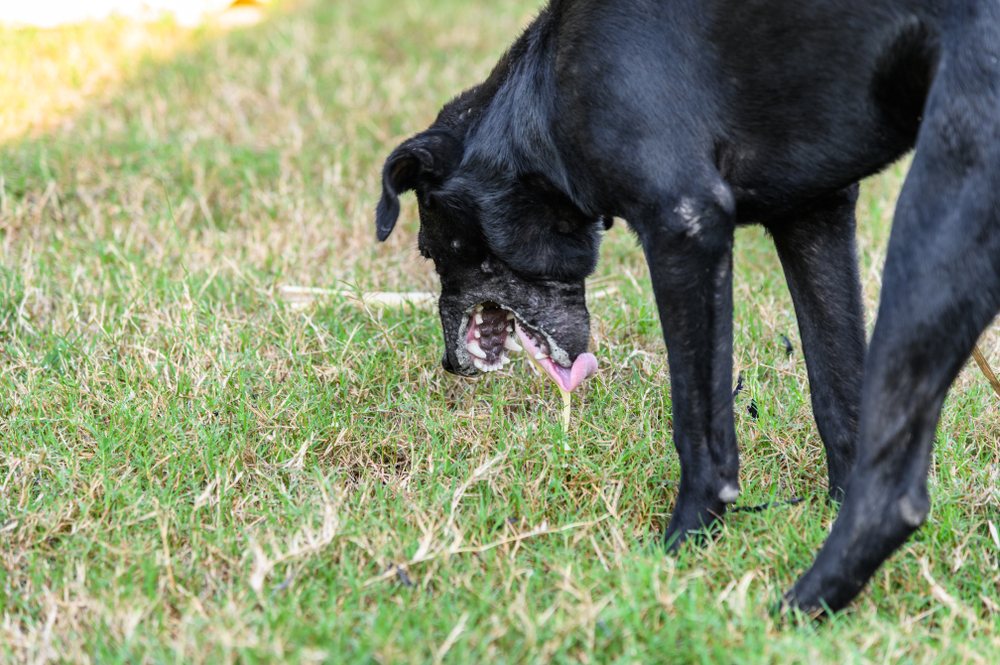Your pet is a beloved family member, and you go to great lengths to ensure they are healthy and happy. However, while your human family members can communicate their physical and emotional needs in words, your pet doesn’t have this luxury. Therefore, you must observe your pet’s behavior and appearance and remain vigilant to health and behavioral changes that could indicate a problem. While not every change is cause for alarm, some of your pet’s health signs can be serious and should not be ignored. Our Animal Care & Emergency Services team shares five warning signs that warrant veterinary care.
#1: Your pet’s eating and drinking habits change
Is your dog who usually eats anything turning up their nose to their kibble? Is your cat packing on the pounds without explanation? Sudden changes in your pet’s eating and drinking habits can indicate an underlying health condition and should be investigated. Common health issues that can cause changes to your pet’s eating and drinking habits include:
- Dental disease — Periodontal problems can cause swollen gums, diseased teeth, and oral masses that may make eating and drinking painful for your pet.
- Endocrine disorders — Hormone imbalances can affect pets’ eating and drinking habits. Dogs are prone to hypothyroidism (i.e., an underactive thyroid); whereas cats are prone to hyperthyroidism (i.e., an overactive thyroid). Either condition can affect your pet’s appetite, weight, and thirst.
- Organ dysfunction — Conditions, such as kidney and liver disease, can lead to changes in eating and drinking habits to compensate for the decreased organ function.
- Gastrointestinal (GI) upset — If your pet is vomiting or suffering from other GI symptoms, they likely won’t feel like eating or drinking. GI upset can be caused by many conditions, or the condition can be the primary health issue.
- Infections — Various infections—viral, bacterial, or fungal—can cause fever, lethargy, and inflammation, which may lead to changes in eating and drinking habits.
- Cancer — Some cancers can cause an appetite decrease. Conversely, certain tumors, particularly those affecting the hormone-producing glands, may increase appetite.
#2: Your pet is having breathing difficulties
Your pet may have difficulty breathing for many reasons, including asthma, choking, pneumonia, heart disease, and allergic reactions. A pet who is having difficulty breathing may exhibit the following signs:
- Open mouth breathing
- Exaggerated abdominal movement during inhalation and exhalation
- Pale or blue gums
- Audible wheezing
For flat-faced (i.e., brachycephalic) pets who are prone to overheating. Excessive panting can also be cause for concern because it can lead to heatstroke. This is a fatal condition that occurs as a result of rapid exhaustion, an increasing body temperature, and escalating emotional and physical distress.
#3: Your pet has an eye injury
The eye is a complex organ, and injuries can affect various parts, including the cornea, sclera, retina, and eyelid. Each of these components requires specialized care, and any injury to your pet’s eyes is an emergency situation. Eye injuries are not only painful but they can quickly lead to infection, endangering your pet’s vision. Sometimes, what seems to be a minor eye injury can indicate a serious underlying condition, such as glaucoma, uveitis, or a systemic disease that needs immediate veterinary attention.
#4: Your pet is limping
Many conditions can cause your pet to limp, and some issues are more concerning than others. Some of these conditions include:
- Bone fractures — Fractures tend to cause significant lameness and can affect any bone.
- Ligament sprains — Pets can experience soft tissue injuries, such as sprains and strains.
- Wounds — Wounds on your pet’s limb can cause pain and lameness.
- Torn nails — Nail issues, such as ingrown nails and torn nails, can be painful, resulting in lameness.
- Arthritis — Arthritis is a common degenerative joint condition that can cause discomfort and lameness in cats and dogs.
- Tick-borne illnesses — Diseases, such as Lyme disease, ehrlichiosis, and anaplasmosis, can cause joint inflammation and pain, resulting in lameness.
- Cranial cruciate ligament (CCL) disease — CCL disease is the most common cause of hind limb lameness in dogs. Many factors cause ligament degeneration and tearing, including obesity, poor conformation, and genetics
#5: Your pet is vomiting excessively

While occasional vomiting might not be an emergency, frequent vomiting or vomiting accompanied by excessive drooling or behavior changes, such as lethargy or appetite loss, can indicate something more serious. If your pet vomits several times during a 24-hour period, cannot keep food or water down, has a fever, or has other health issues, they need a veterinary exam.
You know your pet best, and erring on the side of caution is preferable when considering their health. Early diagnosis and treatment can prevent serious complications and improve your pet’s prognosis. If you notice concerning changes in your pet’s behavior or appearance, schedule an appointment with our Animal Care & Emergency Services team.







Leave A Comment